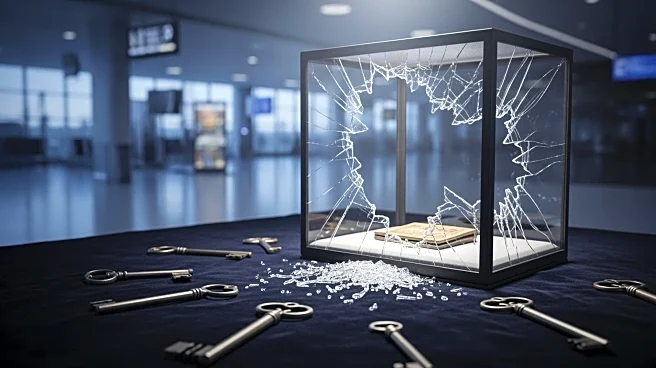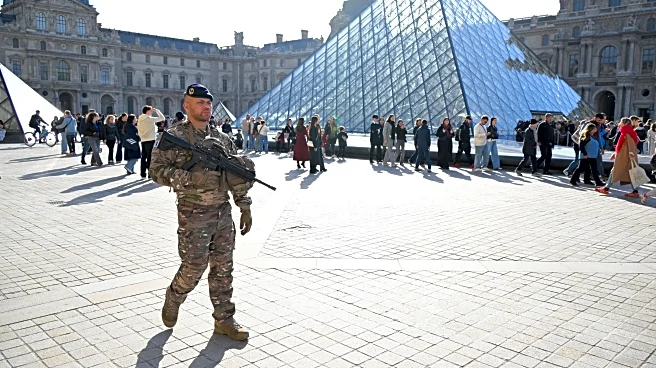What's Happening?
Four individuals have been arrested in connection with the recent heist at the Louvre Museum, where valuable jewels were stolen. According to Paris prosecutor Laure Beccuau, the suspects are local petty
criminals from the Seine-Saint-Denis area, with no known ties to organized crime. The group, consisting of three men and one woman, allegedly used a truck-mounted ladder to access the museum's Apollo Gallery, where they broke into high-security display cases. The stolen items include a diamond and sapphire jewelry set once worn by French royalty.
Why It's Important?
The identification of the suspects as local petty criminals rather than organized crime figures challenges assumptions about the nature of high-profile art thefts. This case highlights a potential shift in criminal activity, where individuals with minor criminal backgrounds are increasingly involved in significant crimes. The incident raises questions about the effectiveness of current security measures in preventing such thefts and may lead to increased scrutiny of museum security protocols. It also underscores the need for law enforcement to adapt to evolving criminal tactics.
What's Next?
The ongoing investigation will focus on recovering the stolen jewels and determining whether additional individuals were involved. The Louvre may face pressure to enhance its security measures to prevent future incidents. This case could also influence broader discussions on crime prevention strategies, particularly in relation to cultural institutions. Authorities may consider implementing more sophisticated surveillance and security technologies to deter similar crimes.












